[Video] The 9 Hallmarks of Aging, episode 1, DNA damage
Hello, I am Guilhem Velvé Casquillas, and we will talk about the 9 identified biological causes of aging. If you want to know a little more than I’m going to tell you, I suggest you read the scientific publication “Hallmarks of Aging” published in Cell magazine in 2013.
In these short videos, we will discover together the mechanisms implemented by our bodies during aging and which have an impact on our health and our life expectancy. I will also try to give you an overview of the state of scientific research regarding possible treatments.
So why did we choose to make this series of videos on the fight against aging?
At Long Life, we believe that humanity is on the brink of a revolution regarding aging. This transhumanist revolution is made possible by complementary scientific approaches grouped under the name NBIC, whose acronym stands for Nanotechnologies, Biotechnologies, Information science and Computer Science. Personally, I believe that it is only by having access to quality information that everyone can decide to take measures against aging, in full knowledge of the facts and according to their own risk/benefit cursors. And that is why we have decided to make the state of research in this field accessible to all, with its share of good and bad news.
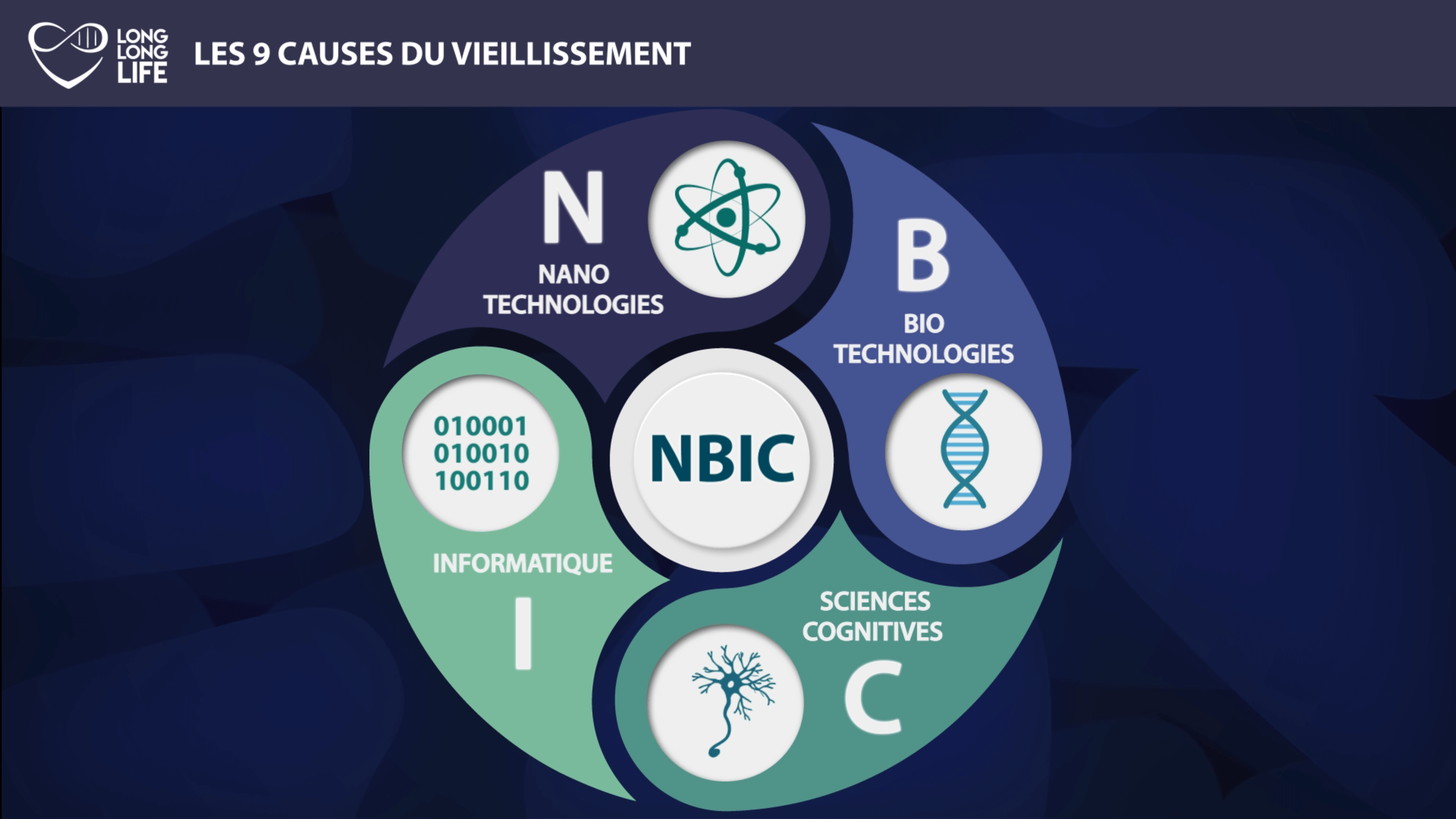
As I said earlier, during this mini-series, we will address the 9 causes of aging. But what does that mean? It is sometimes difficult to know what is a primary cause or consequence of aging. Much research is being conducted to identify the most fundamental causes because it is by directly addressing the causes rather than the symptoms that humanity can quickly overcome aging.
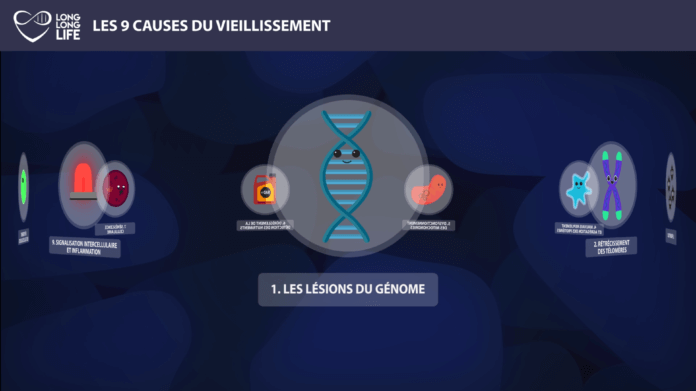
DNA damage – Definition
The first cause of aging that we will address are the damage to our DNA over time. DNA is the medium of information that makes us who we are, the manufacturing program of our body. This information is made up of genes and all genes are grouped together under the name “genome”.
This information is mainly stored in the nucleus of each of our cells. The genome contains all the information that allows our cells to make proteins, each with a specific role to make our body function. These proteins are synthesized using the data contained in each gene and there are between 25 000 and 30 000 genes. All this information must be transmitted from one cell to another when they divide to generate daughter cells. And for that, it is necessary to replicate the DNA integrally at each cellular division.
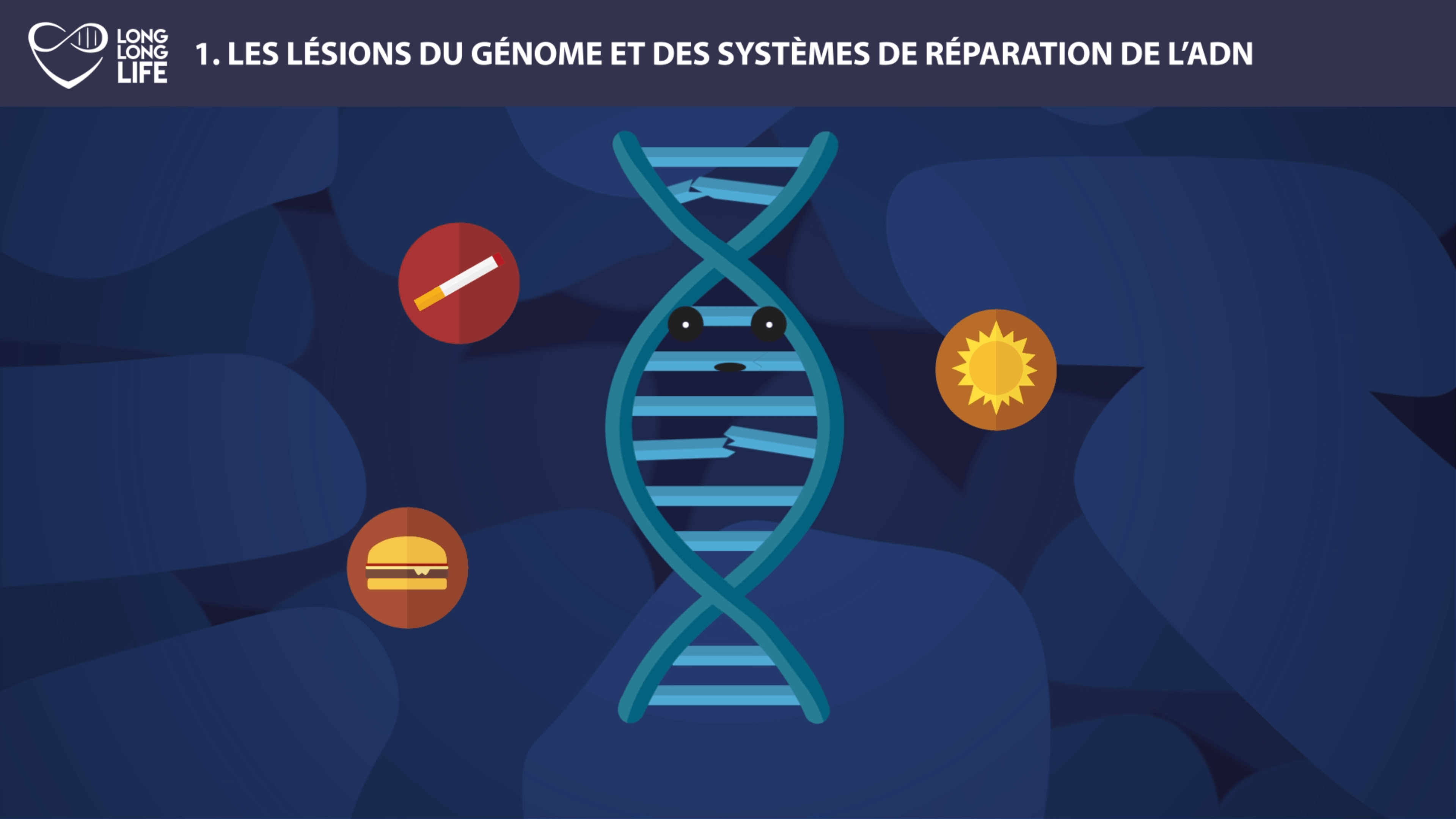
Unfortunately, even this very powerful replication system is not without errors. It has been noted that DNA errors accumulate in life, as many factors influence the stability of the genome. These factors are varied and can be external, such as smoking, sunlight, food… but also internal, such as replication errors: when your body has to copy the information contained in your DNA, it makes mistakes. These errors can either be repaired, cause cell death, or, and this is the problem, be transmitted to daughter cells.
Fortunately, we have repair systems. Some genes build proteins to repair replication errors, but sometimes the replication errors affect the genes that make these repair systems and, through a snowball effect, there is an exponential growth of problems within the cell. In mice and humans, it has been shown that there is a causal link between DNA damage accumulation and aging.
In fact, when the cells in our body divide a large number of times and are carriers of genetic mutations, this causes a dysfunction of the cell that can cause problems at the level of the organ concerned.
DNA damage – Repair systems
Interestingly, it has been shown that during aging, repair systems (such as the PARP protein) become much more abundant in cells, suggesting that our body is aware of the deregulations that come with age and tries to take the necessary steps to fight them. The activity of these repair systems is however dependent on co-enzymes, small molecules that allow them to function. These are essential fuels for our cells whose concentration and recycling decreases with age. Among them, NAD+ is often mentioned, because it is essential to repair mechanisms, but also to mitochondrial health, to which we will return later. When these molecules eventually run out, our repair systems no longer work well, leading to serious disruptions, not only in replication but also in other mechanisms, up to and including cell death.
The question then arises as to who, between the hen or the egg, arrived first. Are co-enzymes decreasing because there are more replication systems or are there more of these systems to try to compensate for the lack of repair related to co-enzymes deficiency? Are these mechanisms causes or consequences of aging?
All we can say today is that there is a correlation between the stock of NAD+ (one of the co-enzymes) and aging.
DNA damage – How can we fight it?
Supplementing with NAD+ may be a good idea to boost our repair systems but it is also possible that cell suicide linked to NAD+ depletion is a protection of the body against cells that have become genetically diseased and that it would be preferable to eliminate.
So when the theory gets too complicated, experiments are done.
Researchers have used mice, which have been treated to keep a constant level of NAD+ throughout their lives. And not only the treated mice lived healthier lives but they also lived longer than the untreated mice. This shows that, in mice in any case, taking NAD+ seems to be a good idea to fight against aging. In humans, as usual, this remains to be proven.
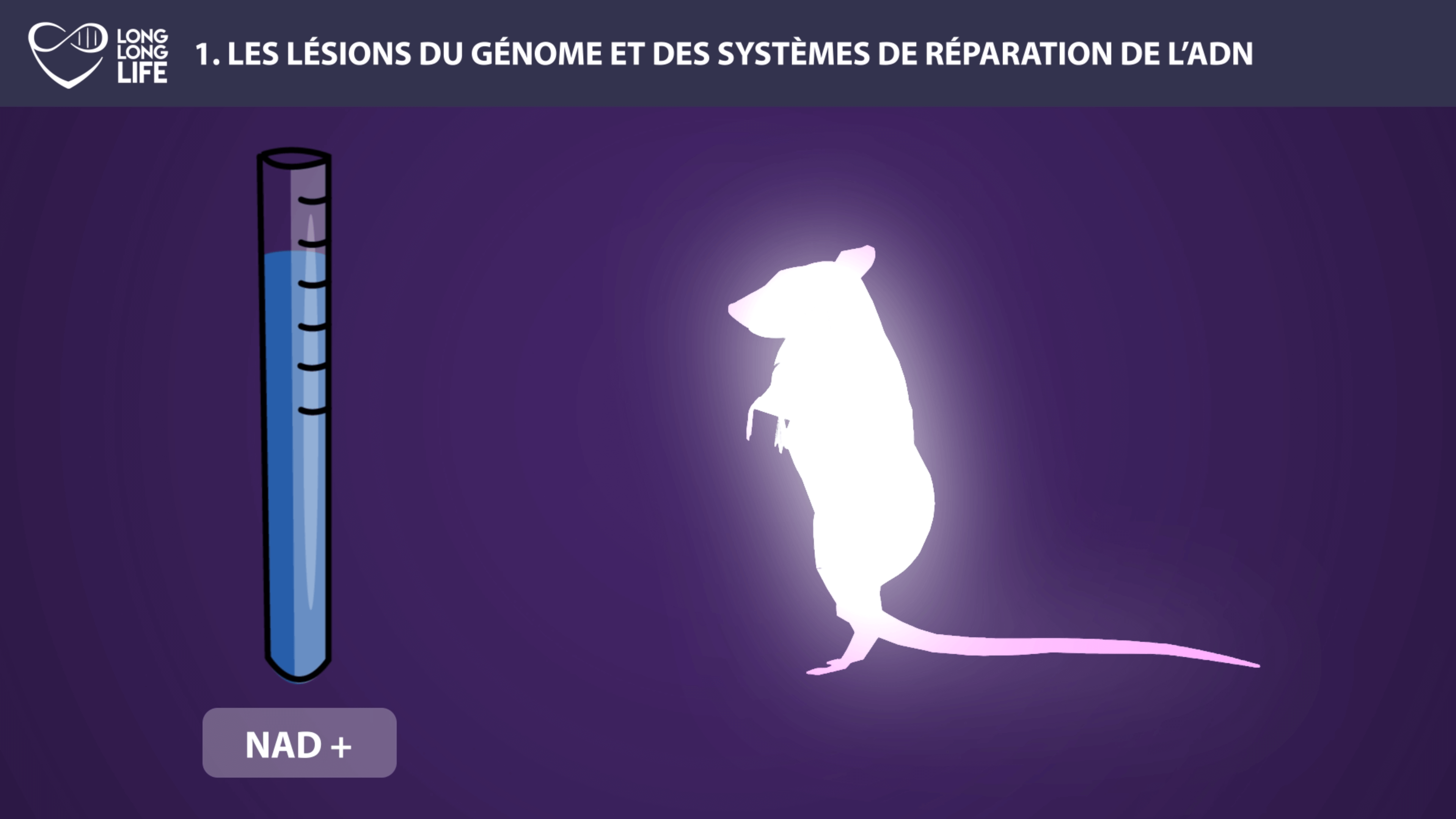
I close this chapter on DNA damage with this example to make you understand the complexity that exists between understanding a mechanism and drawing practical conclusions and safe treatment for those who want to live longer.
In short, the first cause of aging discussed here is the damage to our DNA that is perpetuated with each cell division. Over time, it accumulates and causes our cells to dysfunction or die.
Dr Guilhem Velvé Casquillas
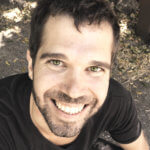
Author/Reviewer
Auteur/Relecteur
Physics PhD, CEO NBIC Valley, CEO Long Long Life, CEO Elvesys Microfluidic Innovation Center
More about the Long Long Life team
Docteur en physique, CEO NBIC Valley, CEO Long Long Life, CEO Elvesys Microfluidic Innovation Center
En savoir plus sur l’équipe de Long Long Life


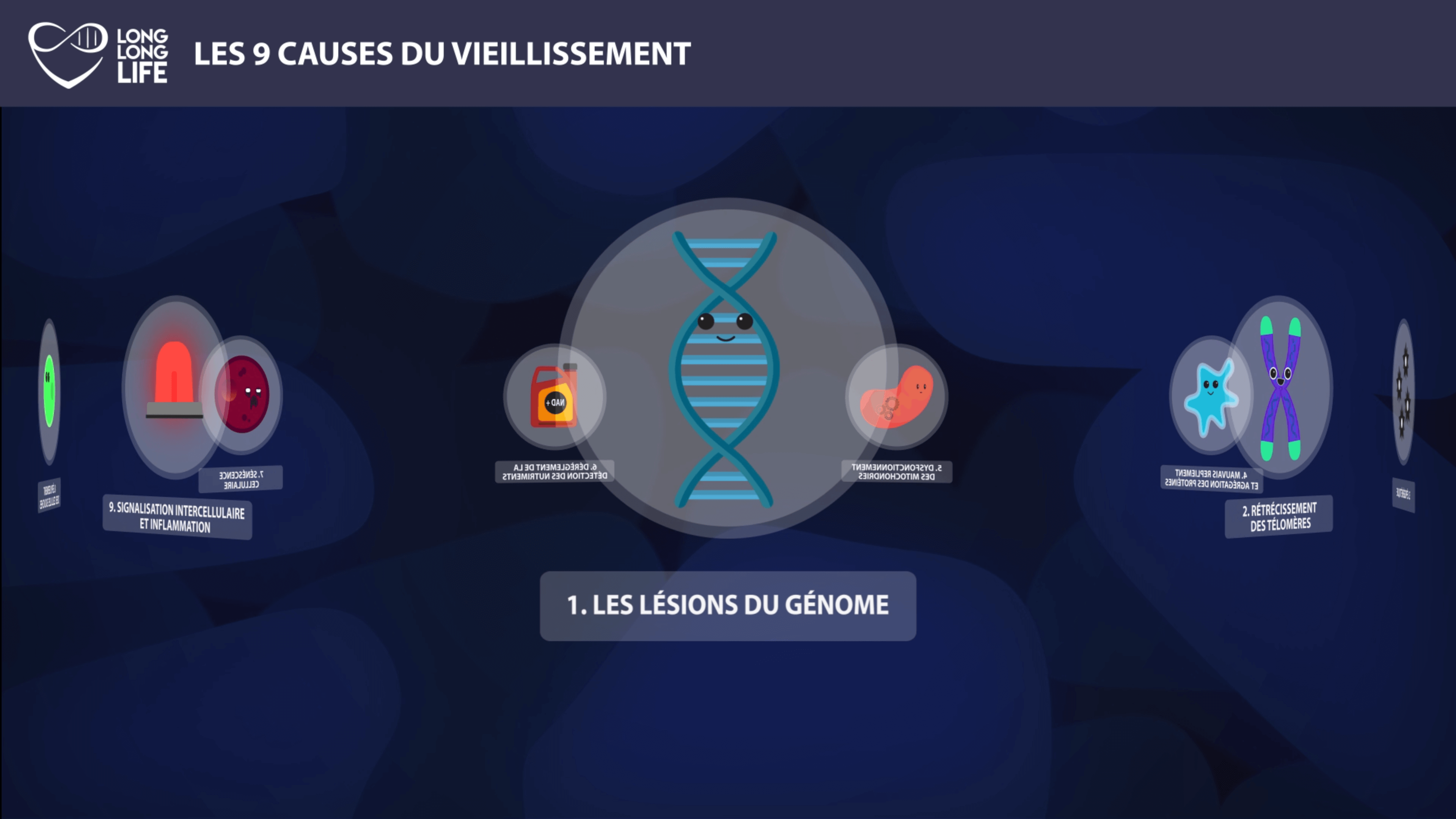
![[Video] The 9 Hallmarks of Aging, Episode 9, Inflammation [FINAL] – with Guilhem Velvé Casquillas PhD](https://www.longlonglife.org/wp-content/uploads/2019/05/Inflammation-Long-Long-Life-longévité-vieillissement-transhumisme-inflammaging-1-218x150.png)
![[Video] The 9 Causes of Aging, Episode 8, Stem Cells – with Dr. Guilhem Velvé Casquillas cellules souches long long life transhumanisme longévité vieillissement arcade](https://www.longlonglife.org/wp-content/uploads/2019/05/cellules-souches-long-long-life-transhumanisme-longévité-vieillissement-arcade-218x150.png)
![[Video] – The 9 Causes of Aging, Episode 7, Senescence – with Dr. Guilhem Velvé Casquillas sénescence long long life longévité transhumanisme vieillissement cellules sénescentes](https://www.longlonglife.org/wp-content/uploads/2019/05/sénescence-long-long-life-longévité-transhumanisme-vieillissement-cellules-sénescentes-1-218x150.png)
![[Video] – The 9 Causes of Aging, Episode 6, Nutrient Detection – with Dr. Guilhem Velvé Casquillas nutriments 1 long long life transhumanisme longévité vieillissement](https://www.longlonglife.org/wp-content/uploads/2019/05/nutriments-1-long-long-life-transhumanisme-longévité-vieillissement-218x150.png)
![[Video] Eurosymposium on Healthy Ageing, Brussels, 2018 Eurosymposium on Healthy Aging](https://www.longlonglife.org/wp-content/uploads/2019/07/P1310252-218x150.jpg)
![[Video] The 9 Hallmarks of Aging, Episode 5, Mitochondria – with Dr. Guilhem Velvé Casquillas mitochondria long long life longevity transhumanism aging free radicals (2)](https://www.longlonglife.org/wp-content/uploads/2019/07/mitochondria-long-long-life-longevity-transhumanism-aging-free-radicals-2-218x150.png)
![[Video] The 9 Causes of Aging, Episode 4, Poorly Folded Proteins – with Dr. Guilhem Velvé Casquillas protéine long long life 9 causes du vieillissement longévité transhumanisme](https://www.longlonglife.org/wp-content/uploads/2019/05/protéine-long-long-life-9-causes-du-vieillissement-longévité-transhumanisme-218x150.png)
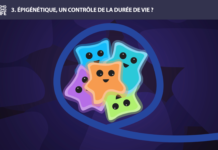
![[Video] The 9 Hallmarks of Aging, Episode 2, Telomere shortening – Guilhem Velvé Casquillas, PhD Télomère - Long Long Life 9 causes du vieillissement longévité transhumanisme](https://www.longlonglife.org/wp-content/uploads/2019/06/Télomère-Long-Long-Life-9-causes-du-vieillissement-longévité-transhumanisme-1-218x150.png)

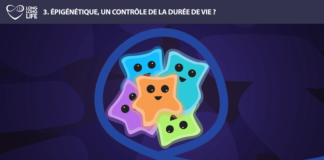
![[Video] – The 9 Causes of Aging, Episode 7, Senescence – with Dr. Guilhem Velvé Casquillas sénescence long long life longévité transhumanisme vieillissement cellules sénescentes](https://www.longlonglife.org/wp-content/uploads/2019/05/sénescence-long-long-life-longévité-transhumanisme-vieillissement-cellules-sénescentes-1-324x160.png)